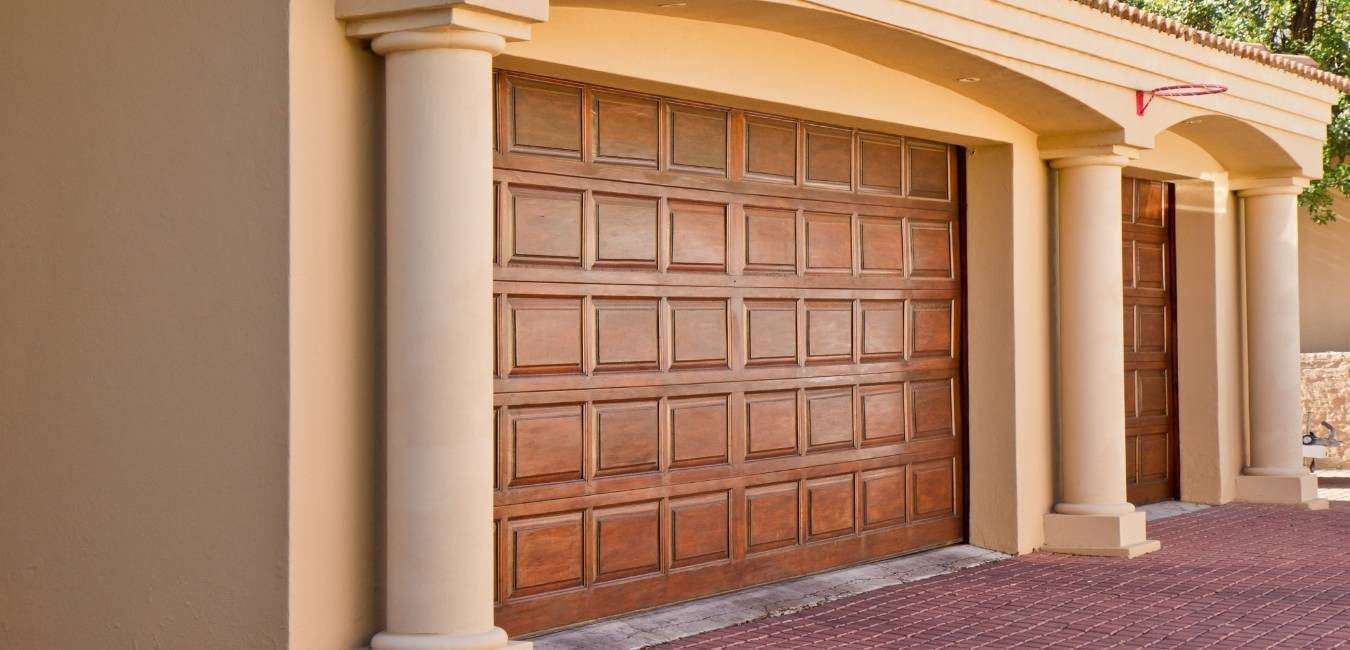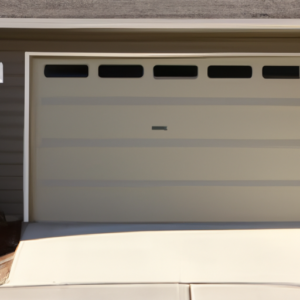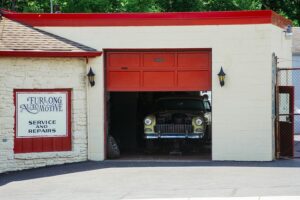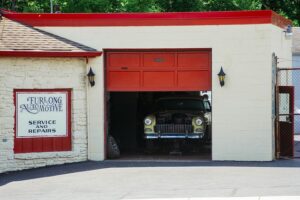Garage doors are the most common of all household doors. They can be found in almost every home throughout America. The purpose of them is to cover the garage, providing shelter for belongings that cannot go into the house itself. This is because garages are normally used to store cars and other large items like lawnmowers, hedges trimmers, etc.
Garage doors can either slide or roll up, depending on the place where they are located. Sliding garage doors are mounted horizontally, usually in suburban homes with driveways and garages leading to the street. The roll-up type is popular in most houses because it provides more room for cars in the garage itself. These types of doors are also simply installed on the ground. It is not like sliding doors with tracks that need to be cut into the cement floor.
Getting your garage door repaired can be an expensive job if you hire a professional team or tinker with it yourself, but by using common sense and following tips laid out for you throughout this article, you will be able to do the job yourself in a few simple steps.
The garage door is a common household item in America and can be found almost anywhere from suburban homes with driveways leading to the street to city dwellings where there are blocks instead of driveways. The garage door provides shelter for belongings that cannot go into the house itself because garages are normally used to store cars and other large items like lawnmowers, hedges trimmers, etc.
There are two types of garage doors: Sliding and roll-up. The sliding type is popular in most houses because it provides more room for cars in the garage itself. They are also simply installed on the ground without tracks that need to be cut into the cement floor. The roll-up type is popular in most houses because it provides more room for cars in the garage itself.
Common problems that arise with garage doors:
The motor, typically an electric one, can stop working and cannot open or close the door anymore. This usually happens because of a power outage or tripped circuit breaker.
The door can also get stuck open. This is usually because one of the springs has broken, which prevents the door from closing automatically when it should.
The tracks can get bent or damaged. These are mainly metal or plastic strips where the door rolls up and down on. They are mounted to the ceiling and/or the floor. The tracks can become bent if they were hit by a car or another object and need to be straightened using a mallet and L-shaped metal rod.
The door can also get stuck when it is in the process of opening or closing, leaving someone with no way out. This is usually because something has fallen into the track preventing the garage door from moving.
The hinges of the door can get loose, causing the door to wobble when it is opened or closed. This can be fixed by tightening them with a screwdriver and hammer.
Garage doors are also prone to squeaks when they are in motion, which can be fixed by applying lubricant spray on the hinges.
Most of these problems are fixable using common sense and by following tips laid out for you throughout this article.
To get your garage door repaired, the steps are relatively simple, but be aware that any job that requires messing with electronic devices or power should only be done by a professional team because it can lead to serious injury or death.
Garage doors are one of the most common household items in America and can be found almost anywhere—from suburban homes with driveways leading to the street to city dwellings where there are blocks instead of driveways. The garage door provides shelter for belongings that cannot go into the house itself because garages are normally used to store cars and other large items like lawnmowers, hedges trimmers, etc.
There are two types of garage doors: Sliding and roll-up. The sliding type is popular in most houses because it provides more room for cars in the garage itself. They are also simply installed on the ground without tracks that need to be cut into the cement floor. The roll-up type is popular in most houses because it provides more room for cars in the garage itself.
Common problems that arise with garage doors:
The motor, typically an electric one, can stop working and cannot open or close the door anymore. This usually happens because of a power outage or tripped circuit breaker. The door can also get stuck open. This is usually because one of the springs has broken, which prevents the door from closing automatically when it should. The tracks can get bent or damaged. These are mainly metal or plastic strips where the door rolls up and down on. They are mounted to the ceiling and/or the floor. The tracks can become bent if they were hit by a car or another object and need to be straightened using a mallet and L-shaped metal rod. The door can also get stuck when it is in the process of opening or closing, leaving someone with no way out. This is usually because something has fallen into the track preventing the garage door from moving. The hinges of the door can get loose, causing the door to wobble when it is opened or closed. This can be fixed by tightening them with a screwdriver and hammer. Garage doors are also prone to squeaks when they are in motion, which can be fixed by applying lubricant spray on the hinges.
All of these problems are fixable using common sense and by following tips laid out for you throughout this article.
To get your garage door repaired, the steps are relatively simple, but be aware that any job that requires messing with electronic devices or power should only be done by a professional team because it can lead to serious injury or death.
Garage doors are one of the most common household items in America and can be found almost anywhere—from suburban homes with driveways leading to the street to city dwellings where there are blocks instead of driveways. The garage door provides shelter for belongings that cannot go into the house itself because garages are normally used to store cars and other large items like lawnmowers, hedges trimmers, etc.
There are two types of garage doors: Sliding and roll-up. The sliding type is popular in most houses because it provides more room for cars in the garage itself. They are also simply installed on the ground without tracks that need to be cut into the cement floor. The roll-up type is popular in most houses because it provides more room for cars in the garage itself.
Once there is no more movement in the door, it is time to get serious about fixing it. Take out all of your tools and place them next to you where they are easily accessible. Reverse the order of how you took everything apart earlier so that you can put everything back together again with minimal trouble or confusion.
Every now and then, the garage door opener goes out because it needs to be replaced with a new one. This is also something that should only be done by a professional team.
Common problems that arise with garage doors:
The motor, typically an electric one, can stop working and cannot open or close the door anymore. This usually happens because of a power outage or tripped circuit breaker. The door can also get stuck open. This is usually because one of the springs has broken, which prevents the door from closing automatically when it should. The tracks can get bent or damaged. These are mainly metal or plastic strips where the door rolls up and down on. They are mounted to the ceiling and/or the floor. The tracks can become bent if they were hit by a car or another object and need to be straightened using a mallet and L-shaped metal rod. The door can also get stuck when it is in the process of opening or closing, leaving someone with no way out. This is usually because something has fallen into the track preventing the garage door from moving. The hinges of the door can get loose, causing the door to wobble when it is opened or closed. This can be fixed by tightening them with a screwdriver and hammer. Garage doors are also prone to squeaks when they are in motion, which can be fixed by applying lubricant spray on the hinges.
To get your garage door repaired, the steps are relatively simple, but be aware that any job that requires messing with electronic devices or power should only be done by a professional team because it can lead to serious injury or death. If you do need to replace your opener, here is how:
Ensure that the power to the opener is turned off at the source.
Lift up on the manual release lever under the door. This will prevent it from going down while you are working on it.
Disconnect all the wires leading to the buttons, lights, and motor using a screwdriver. These should be disconnected in order from smallest to largest if there are also wires leading up to the buttons, which are usually next to or on top of the main garage door.
The motor should be mounted with 3 large bolts, 2 on each side and one in the back. Remove these bolts carefully using a wrench or screwdriver. The opener itself can then be pulled out very easily because it just slides out over the top.
Assemble the new opener according to the instructions that come with it, ensuring that everything is securely fastened and goes where it should. Install the belt and pully system inside of it before attaching it to the rail so that you can see if they spin smoothly when plugged in. Once everything looks good, carefully attach this section back onto the door itself.
Once everything is back in place, install the new light bulb in its socket, making sure it is secure. Be particularly careful when doing this because they can be easily knocked out of place and broken when pulling on them using pliers, which can be dangerous if there are exposed wires around the area.
Connect all the wires up again and position the new buttons near where they were before.
Be sure to test everything out by putting the power back on at the source, closing, and opening your garage door a couple of times with the button. There may be some issues that you need to fix, but overall it should work just fine once you do this.






